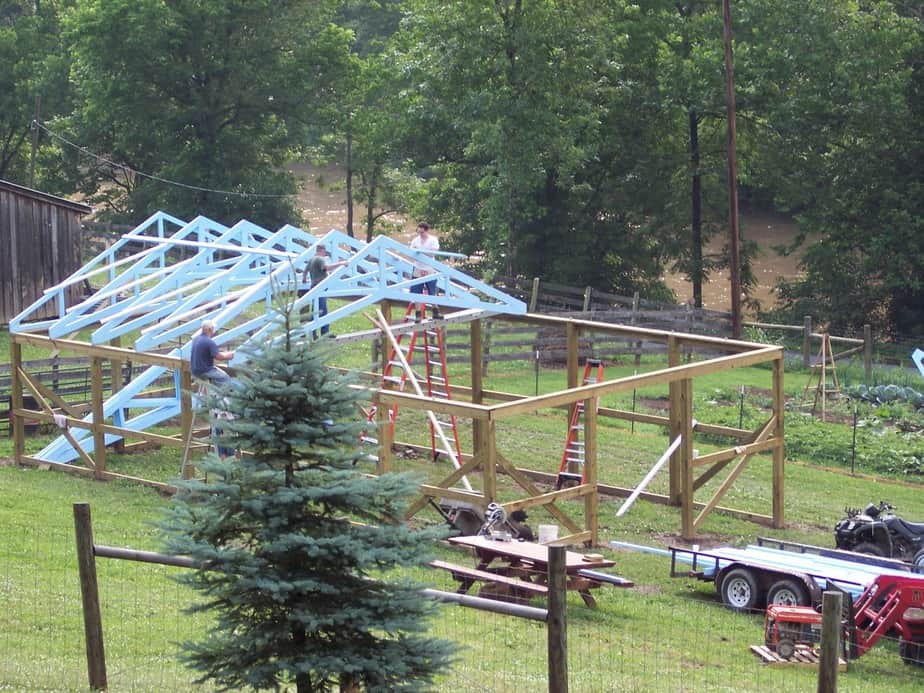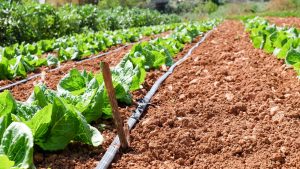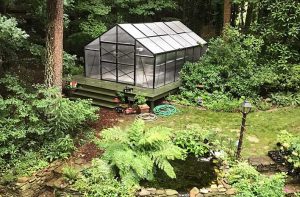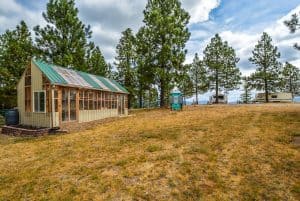Building your own greenhouse is a slightly daunting task. So just like any other big DIY feat, it’s important to start one step at a time.
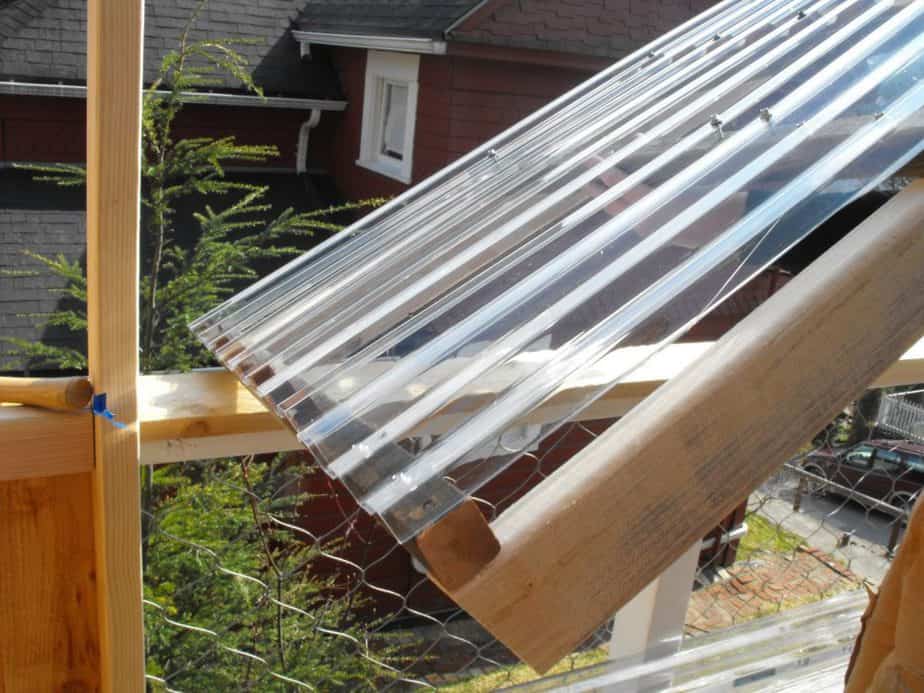
Since the material you choose for your greenhouse panes (basically the roof and walls of your structure, sometimes called “coverings” or “glazing’) directly determines how well your greenhouse works, this is a great place to begin.
The panes – or “glazings” or “coverings” – will be the sole focus of this post. We’ve got information from material must-haves to building tips and tricks to make construction a breeze.
Materials Matter
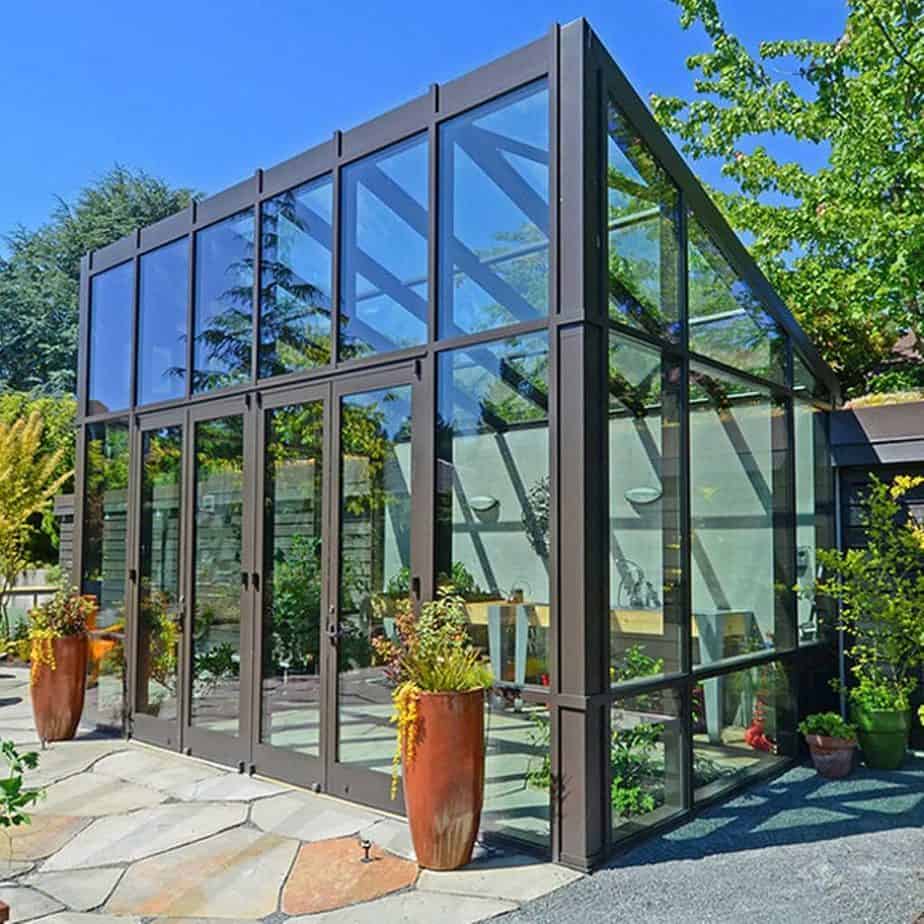
Let’s get this out of the way: The “walls” of a greenhouse need to be clear, so sunshine can get inside. Oh, you already knew that? You’re a greenhouse expert already!
But greenhouse panes also need to be durable to withstand years of changing weather. They should be at least somewhat insulating, too, and be able to diffuse light across the growing space.
Greenhouses are most commonly built with glass, fiberglass, polyethylene film, polycarbonate, and a few other chemical polymers, all with different advantages and disadvantages.
Things to Consider
Anytime you purchase something there are things to consider, but when it comes to what you make your greenhouse out of it’s tantamount that you consider the right things!
We’ll go over the best structures and materials to use for all the different climates and explain to you why we recommend what we do.
Greenhouse Structure
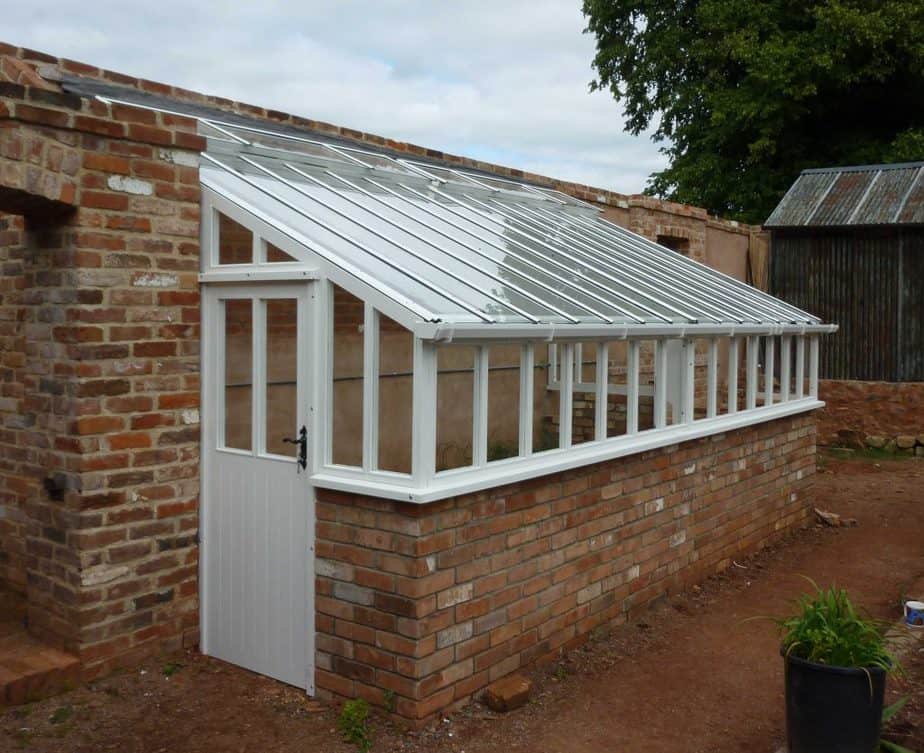
There are a few popular greenhouse structural designs:
- Lean-to
- Detached
- Gutter connected
We won’t go into the pros and cons of each of them here, but it’s important to know that each one functions differently with different types of coverings as you make your building decisions.
The design of a greenhouse greatly impacts its productivity and energy-efficiency. So, keep your design in mind as we move on to the following sections.
Climate
Where do you live?
Do winters get exceptionally cold or just a bit chilly?
Do you get lots of snow or rain, or even high winds?
Consider every aspect of your home climate in order to make the best-informed decision about covering materials.
Cost
If you’re on a small budget, your choices in greenhouse materials might be more limited.
Glass greenhouses will run the highest bill, while other materials are more affordable.
In most cases, a smaller greenhouse is a cheaper greenhouse. Consider this when deciding on the scale of your project.
Plants
What kinds of plants do you want to grow in your greenhouse? If they need a lot of bright sunlight, or if they’re extremely sensitive to cold, your options may be narrowed.
Be sure to know the specific effects of your material choice when choosing plants!
Material Criteria:
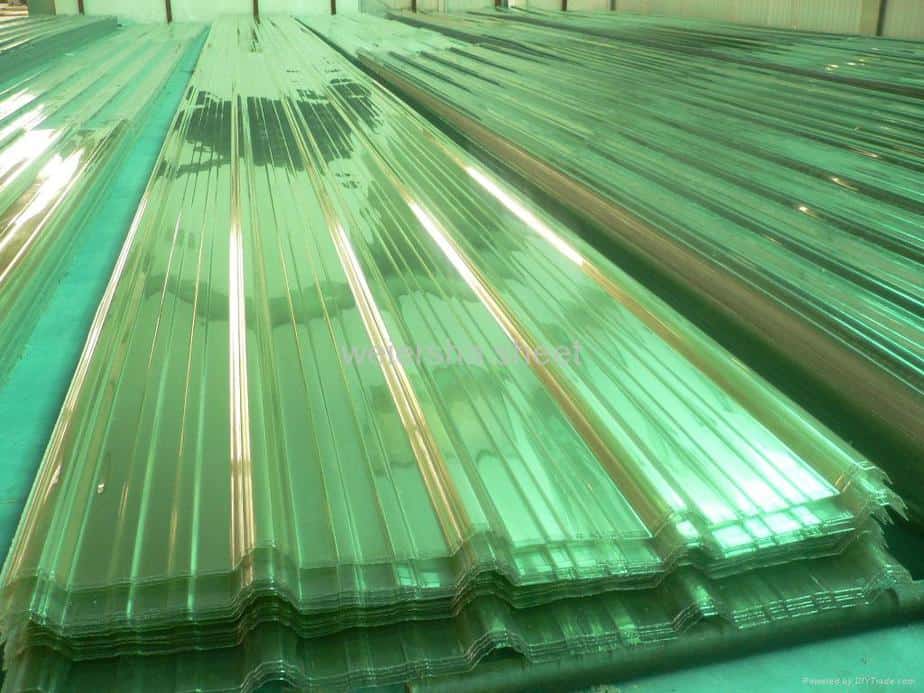
You’ll also want to think about what you want most from your greenhouse. Consider these factors when looking at building materials:
- Cost
- Light transmission factor
- Durability/lifespan
- Energy efficiency/insulation factor
- Appearance
Glass
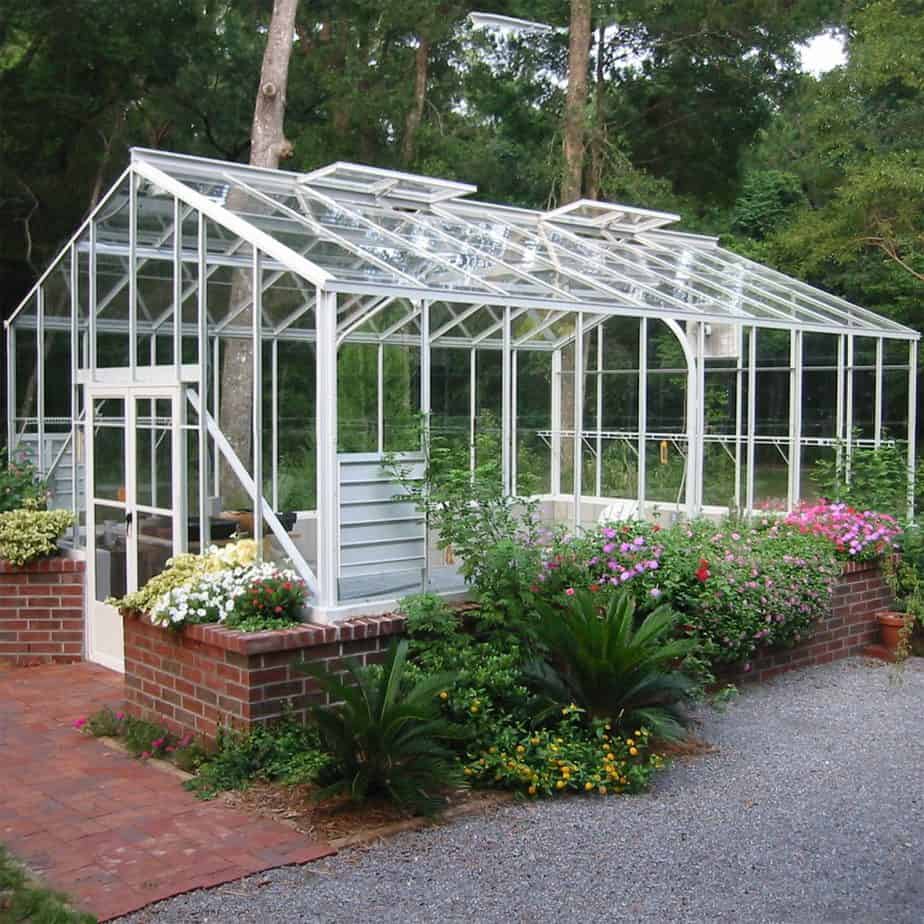
If you want that gorgeous “conservatory of flowers” look, you’re craving a glass greenhouse. Beware, though, a glass greenhouse’s price tag is just as high-end as its appearance.
When people think about greenhouses, a shiny glass structure typically comes to mind. They look lovely, but glass greenhouses are the least energy-efficient type of greenhouse. Production/assembly can be expensive and tricky. Continued necessary maintenance is required.
Glass does provide the best transmission of the sun’s rays into the greenhouse. But be careful here, too, because in some cases, a glass greenhouse can allow too much light, creating a plant-damaging “hot-spot.”
Glass doesn’t diffuse light. So beyond the fact that the glass is transmitting a huge amount of the sun’s rays onto your plants, you will also need to figure out a diffusion system. You might reflective wall-coverings or even just a white-painted wall, so that all plants can get enough sun.
Lastly, this should go without saying, but: glass is extremely breakable.
Let’s compare two different types of glass greenhouses:
Single Pane Glass
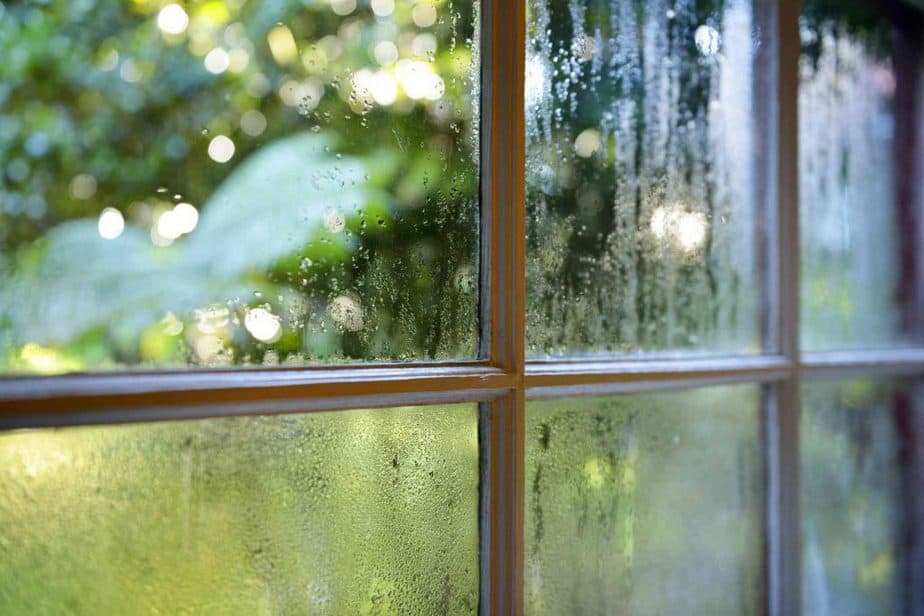
Single pane greenhouses aren’t a reasonable choice for colder or even most mild climates. They’re not at all energy-efficient—as anyone with floor-to-ceiling windows in their home can tell you. Single pane glass greenhouses are fragile and usually can’t even withstand the weight of snow.
So what’s the reason someone would have a single pane greenhouse?
Because they’re pretty. This is a major form-over-function structure.
Pros: Looks great!
Cons: Everything else
Double Pane Glass
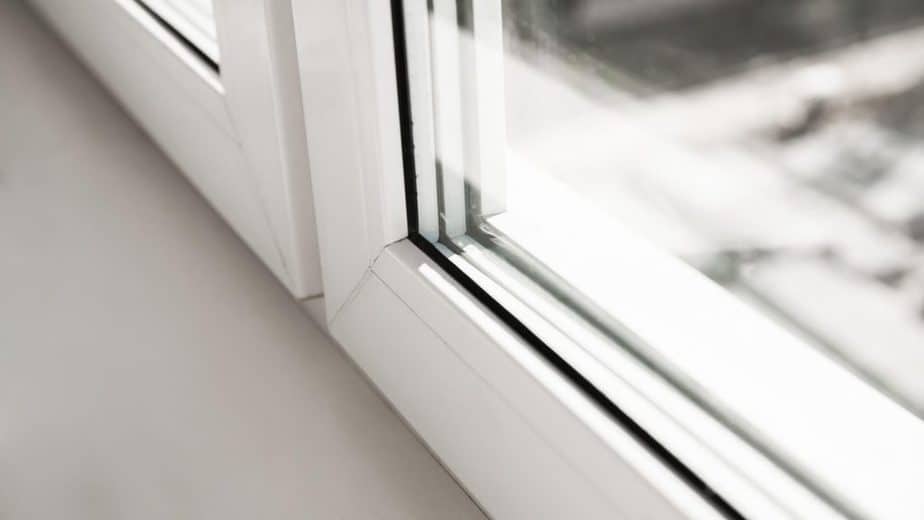
By far the most expensive type of greenhouse, double-pane glass greenhouses are designed to be more energy-efficient without compromising traditional style.
Pros: Nice appearance, highest light transmission
Cons: Expensive, poorly insulated, fragile, non-diffusing
Polycarbonate
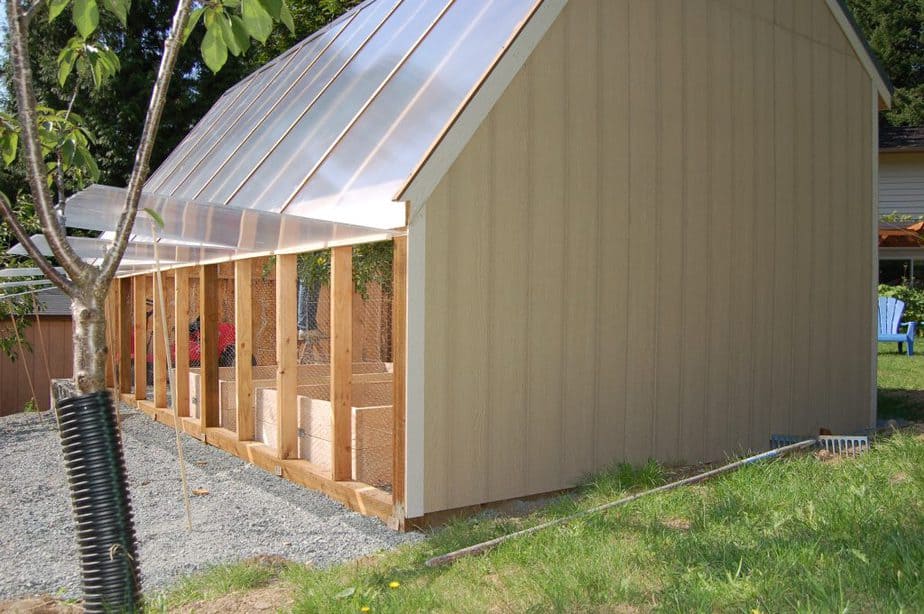
Polycarbonate is a durable plastic polymer that is virtually transparent. It doesn’t provide quite as much light transmission as glass, but it’s pretty darn close. Thick plastic compound is cheap, light-weight and more versatile than glass or other heavier materials.
Polycarbonate is made up of multiple interior walls, and those air pockets also provide insulation, making a polycarbonate greenhouse is quite energy-efficient! Because polycarbonate diffuses the sunlight, unlike glass, the likelihood of hot spots is lower, too. Your plants will also get evenly distributed light, so none of them will feel left out. You can even find tinted polycarbonate panels to install for shade, rather than using a shade cloth.
Many prefab, ready-to-build greenhouse structures that you can buy online are made of polycarbonate. Polycarbonate panels come in a variety of thicknesses, and pieces can be easily cut to size. For this reason, polycarb is a very popular choice among home greenhouse DIY-ers.
If you have an old, well-preserved but low-functioning glass greenhouse on your property that you’d like to upgrade and use while maintaining the original architecture, turn to polycarbonate. These panels can be used to retrofit “antique” glass greenhouses to increase efficiency.
Unfortunately, polycarbonate panels can cloud or yellow over time when exposed to UV rays, which will reduce light transmission. Look for a polycarb material that is coated to protect against UV rays and has a good 10-year (at least) warranty.
Pros: Energy-efficient/insulating, durable, inexpensive, high light transmission and diffusion
Cons: Not as pretty, can cloud over time
Polyethylene Film
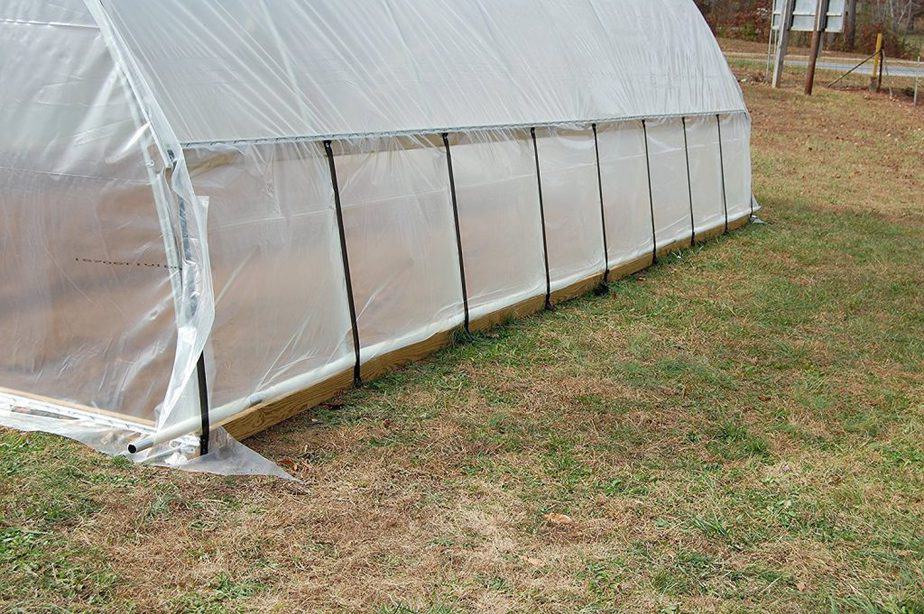
Polyethylene is a flexible, lightweight plastic film that is inflated with hot air. This kind of covering is slightly atypical for home greenhouse growers, but works for some people. It provides good light transmission, though not as good as polycarbonate panes.
Polyethylene film for your greenhouse is inexpensive and lightweight, making it easy to use and move. It’s a great option for gardeners who want to build a greenhouse frame out of something like PVC pipe or any other “hoop” style house.
Just be careful not to tear the film! If you have an outdoor cat who likes to climb on top of anything and everything (cars, sheds, greenhouses…), poly film might not be your wisest choice.
You can use one or two layers of poly film—obviously, two will be more insulating for your plants. But you can also count on condensation gathering between the two layers, causing potential mold. And, as you can imagine, light transmission is reduced with more layers.
Pros: Very inexpensive, lightweight, easy to use and build with
Cons: Not very durable or sturdy, not the highest light transmission
Fiberglass

Fiberglass, also called “glass-reinforced plastic,” is common for commercial greenhouses and some home greenhouses, too. While fiberglass doesn’t allow quite as much light in as glass, it has great light-transmitting properties.
Fiberglass is very sturdy and light (many surfboards are made out of fiberglass, after all) and it diffuses light well. It also insulates much better than glass.
Unfortunately, and somewhat of ironically, most fiberglass will break down with extended exposure to UV rays. Obviously, that’s not a great feature of something that is built to be in the sun. The lifespan of fiberglass can be as short as five years under certain conditions, so it can be a bigger long-term expense. Newer fiberglass is being manufactured with UV protection, but it will cost more.
For more durability and lifespan, look for corrugated fiberglass, which will cost you more.
Be careful if you’re cutting fiberglass by yourself—the tiny, embedded glass particles that make this material so durable and useful are also extremely sharp and can damage lungs if inhaled. Wear eye and face projection that covers your nose and mouth.
Pros: Lightweight, diffuses light, looks nice
Cons: Expensive, deteriorates over time
Acrylic
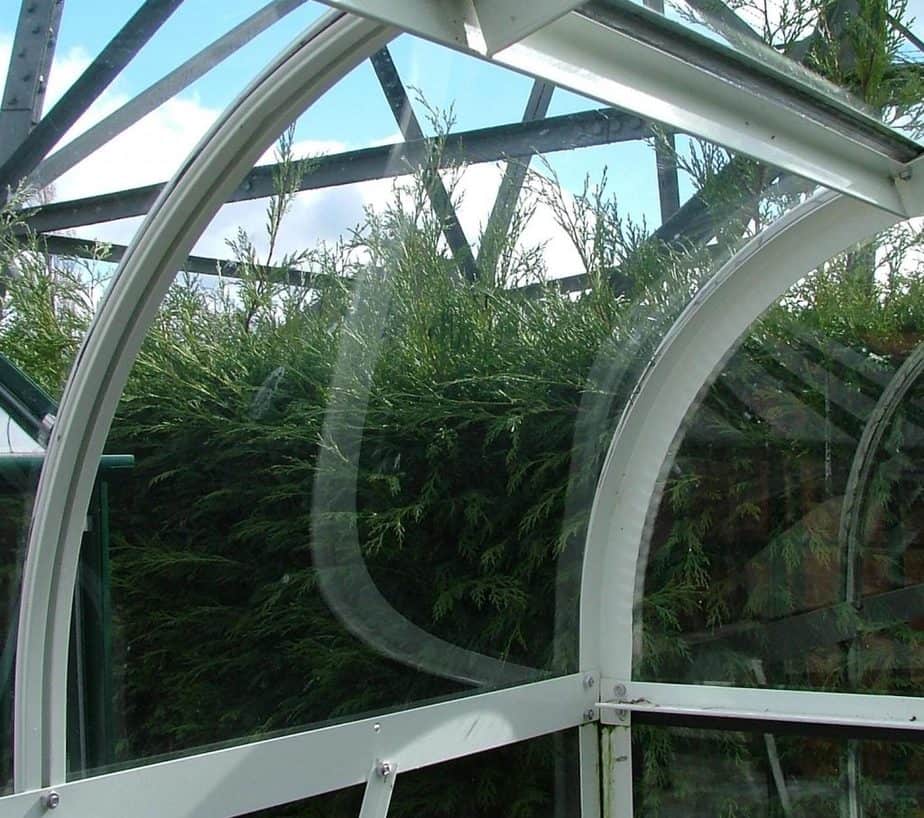
Think of acrylic like a more durable, more expensive version of polycarbonate panes. Acrylic is one of the many names for the chemical compound Poly(methyl methacrylate), and you might know it as “Plexi-glass.” There are some differences in various trademarked names, but for our purposes, “acrylic” can cover them all.
Acrylic panes are much lighter than glass and much less fragile but can be quite pricey. They’re worth the initial investment, though, as they can last decades without needing to be replaced. A strong acrylic greenhouse can withstand snow, hail, winds, and, yes, cat claws.
People choose acrylic over polycarb largely for the lifespan and durability factors.
Pros: Very durable, very high light transmission, lightweight, looks nice.
Cons: Expensive
Summary
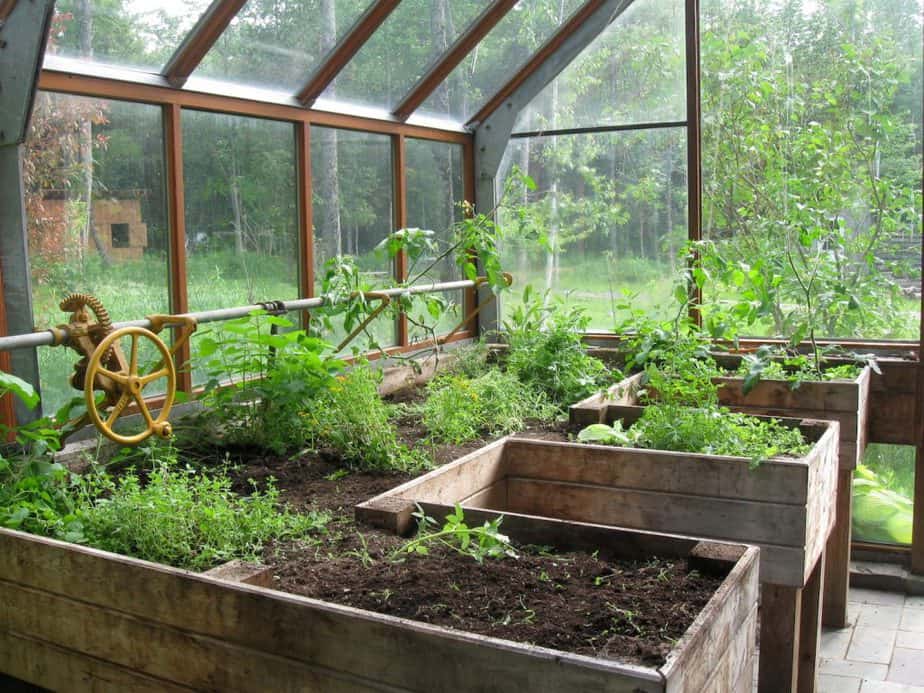
The efficiency and productivity of a greenhouse will be very much dependent on the type of material used for the covering.
Give yourself plenty of time and patience as you start to design your own greenhouse. The options can seem endless! But each material has its own advantages and disadvantages that will help you decide what’s best for your new growing habitat.
Remember that all the materials you use to build your greenhouse will determine its efficiency and productivity—not just the coverings, but also the floors, frame, and any other insulation.
Keep in mind, too, that different climates and weather conditions will call for different materials. Do plenty of research into your climate, talk with local greenhouse growers, and consult a local garden store before you commit to a style.

